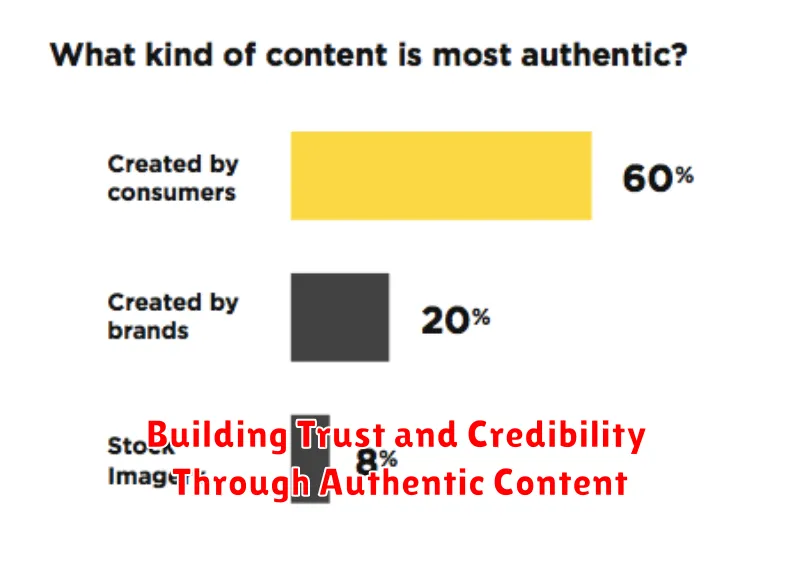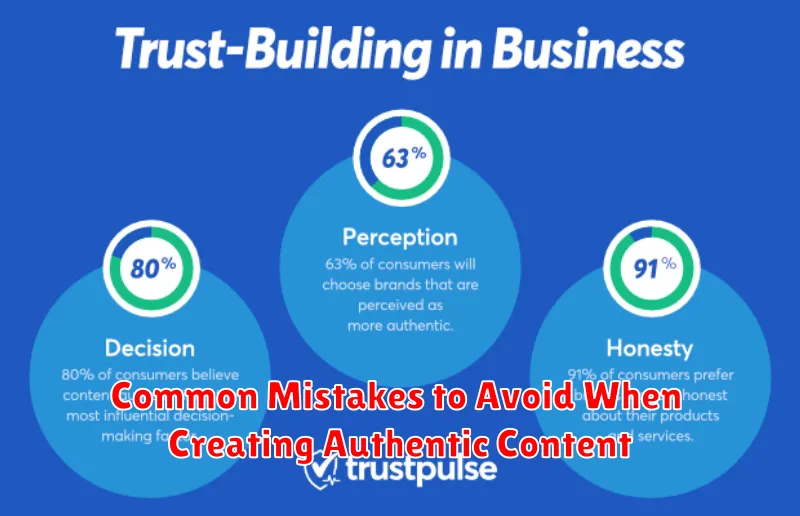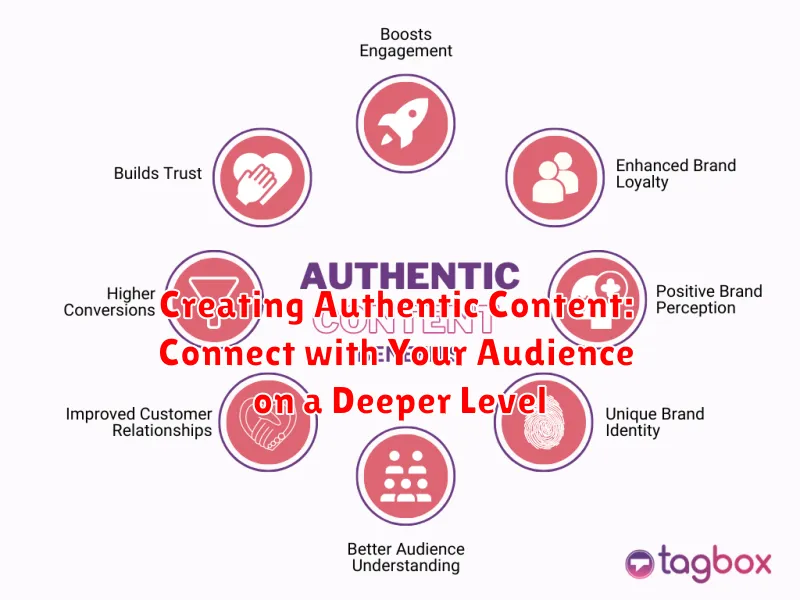In today’s digital landscape, creating authentic content is more crucial than ever. Audiences are increasingly discerning, seeking genuine connections and valuable information. Simply broadcasting promotional material is no longer sufficient. To truly resonate with your audience and foster lasting relationships, you must prioritize authenticity in your content strategy. This involves understanding your audience’s needs, values, and pain points, and crafting content that speaks directly to them. Connecting with your audience on a deeper level requires transparency, honesty, and a willingness to share your unique perspective. By embracing authenticity, you can build trust, establish credibility, and ultimately achieve greater success.
This article will explore the key elements of creating authentic content and provide practical strategies for connecting with your audience on a deeper level. We’ll delve into the importance of understanding your audience, crafting a genuine brand voice, and delivering value through your content. Discover how to move beyond superficial engagement and cultivate meaningful interactions that build a loyal following. Learn to leverage the power of authenticity to establish your brand as a trusted source of information and cultivate a community around your shared values. By focusing on genuine connection, you can transform casual readers into dedicated advocates and unlock the true potential of your content marketing efforts.
Defining Authenticity in Content Creation
In the digital age, authenticity has become a powerful currency. But what does it truly mean to create authentic content? It goes beyond simply being truthful. It’s about presenting your brand or yourself in a way that is genuine, transparent, and aligned with your core values.
Authentic content is not about chasing trends or mimicking competitors. It’s about finding your unique voice and perspective. It’s about connecting with your audience on a deeper level by sharing your genuine beliefs, experiences, and even vulnerabilities.
Authenticity involves consistency. It means ensuring your actions align with your words. It’s about building a brand identity that resonates with your target audience because it reflects who you truly are.
Ultimately, authentic content is driven by a desire to provide value to your audience, not solely for self-promotion. It’s about building trust and fostering a genuine connection.
Understanding Your Target Audience and Their Values
Creating authentic content begins with a deep understanding of your target audience. Who are they? What are their needs, motivations, and pain points? What values do they hold dear?
Audience research is crucial in this process. Utilize tools like surveys, social media listening, and website analytics to gather data about your audience’s demographics, interests, and online behavior.
Understanding their values is particularly important. What causes do they support? What issues are important to them? By aligning your content with their values, you can create a stronger connection and build trust.
Consider creating audience personas to represent your ideal customer. Give them names, backgrounds, and motivations to help you visualize and understand their needs more effectively. This allows you to tailor your content to resonate with their specific values and interests.
Sharing Your Brand Story and Values
Sharing your brand story is a cornerstone of authentic content creation. It’s about connecting with your audience on a human level by revealing the heart and soul of your brand. A compelling brand story provides context and meaning behind your products or services.
Start by defining your core values. What principles guide your business decisions? What do you stand for? Communicate these values clearly and consistently in your content. This helps attract an audience that aligns with your beliefs, fostering a sense of community and loyalty.
Authenticity requires vulnerability. Don’t be afraid to share the challenges and triumphs you’ve experienced in building your brand. These stories resonate with audiences because they demonstrate real human experiences. Sharing your values not only informs your audience, it showcases your commitment to something bigger than just profits.
Creating Content that Resonates with Your Audience
Creating resonant content involves understanding your audience’s needs, interests, and pain points. It’s about crafting content that speaks directly to them, offering value and sparking an emotional connection.
Relevance is key. Ask yourself: What questions are my audience asking? What challenges are they facing? What information would be helpful to them?
Engage your audience by using storytelling, asking questions, and encouraging interaction. Content that resonates fosters a sense of community and encourages sharing.
Consider the format of your content. Different audiences prefer different mediums. Experiment with various formats such as blog posts, videos, infographics, and podcasts to discover what resonates best with your target audience.
Showcasing Your Expertise and Personality
Authentic content stems from a place of genuine knowledge and experience. Showcase your expertise by offering unique insights, valuable perspectives, and informed opinions within your niche. Don’t be afraid to delve into the specifics, demonstrating a deep understanding of your subject matter.
Infusing your personality into your content helps differentiate you from the crowd. Let your unique voice shine through in your writing style, tone, and the way you present information. Personality adds a human touch, making your content relatable and engaging. Consider what makes you unique and how you can weave those elements into your content, whether it’s through humor, personal anecdotes, or a distinct perspective. This personal touch fosters a stronger connection with your audience, making them feel like they are interacting with a real person, not just a brand.
Building Trust and Credibility Through Authentic Content

Trust and credibility are essential for building strong relationships with your audience. Authentic content plays a vital role in fostering these connections. By consistently delivering genuine and valuable content, you demonstrate a commitment to your audience’s needs and interests. This fosters a sense of reliability and strengthens their belief in your brand.
When your audience trusts your brand, they are more likely to engage with your content, share it with their network, and ultimately become loyal customers or followers. Authenticity builds bridges and establishes your brand as a reputable source of information and expertise.
Transparency is key to building trust. Openly sharing your processes, acknowledging challenges, and addressing customer concerns head-on demonstrates integrity. This vulnerability fosters deeper connections and reinforces the perception of authenticity.
The Role of Transparency and Honesty in Building Trust
Transparency and honesty are the cornerstones of authentic content and are crucial for establishing trust with your audience. Transparency involves openly communicating your processes, motivations, and even potential shortcomings. Being upfront about how you operate builds confidence and allows your audience to understand your perspective.
Honesty, on the other hand, requires presenting information truthfully and accurately. Avoid exaggerating claims or misleading your audience. While highlighting the positives is natural, acknowledging limitations or challenges demonstrates integrity and strengthens your credibility. Honesty fosters a sense of genuine connection and respect.
When you are transparent and honest, you demonstrate a willingness to be vulnerable, which resonates deeply with audiences. This vulnerability fosters a sense of shared experience and strengthens the bond between you and your audience. By being open and truthful, you invite your audience to connect with you on a deeper level, ultimately building stronger, more meaningful relationships based on trust.
Common Mistakes to Avoid When Creating Authentic Content

Creating authentic content requires careful consideration and a genuine approach. Avoiding common pitfalls can significantly enhance your connection with your audience. One frequent mistake is inconsistent messaging. Ensure your brand voice and values are consistently reflected across all platforms and content pieces. This builds a cohesive and trustworthy brand image.
Another error is lacking originality. Simply replicating trending content without adding your unique perspective can appear disingenuous. Focus on offering fresh insights and perspectives that reflect your brand’s unique identity. Overly promotional content can also deter audiences seeking authentic connections. Strive for a balance between promoting your offerings and providing valuable, informative content.
Ignoring audience feedback is a critical misstep. Actively listen to your audience’s comments and concerns. Use their feedback to refine your content strategy and demonstrate your commitment to their needs. Finally, being afraid to show vulnerability can hinder authenticity. Sharing relatable struggles and challenges can foster deeper connections with your audience. Embrace imperfections and show the human side of your brand.
Measuring the Impact of Your Authentic Content
Measuring the success of your authentic content strategy goes beyond simple vanity metrics like likes and shares. While these can offer some initial insight, they don’t paint the full picture. True impact lies in understanding how your content influences audience behavior and contributes to your overall business objectives.
Key Performance Indicators (KPIs) to consider include website traffic stemming from specific content pieces, time spent on page, conversion rates (e.g., newsletter sign-ups, product purchases), and social media engagement that leads to meaningful interactions (e.g., comments, shares that generate discussions).
Analyzing website analytics provides valuable data on audience behavior and content performance. Track which content pieces drive the most traffic, generate leads, and contribute to conversions. This data can inform future content creation and help optimize existing content for better performance.
Social listening is also crucial. Monitor brand mentions and conversations surrounding your content to gauge audience sentiment and identify areas for improvement. Tracking relevant hashtags and keywords can provide insights into how your audience perceives your brand and the value they derive from your content.

